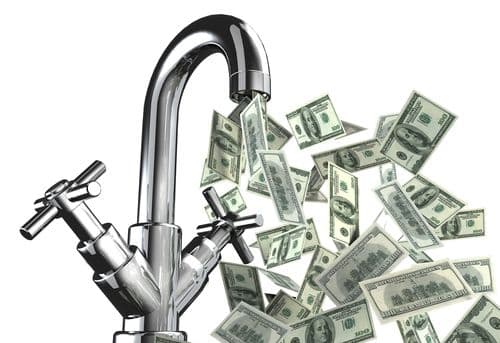As a small business owner, cash flow is likely top of mind, all the time—especially now as you’re thinking about your post-pandemic business strategy.
Cash flow is the lifeblood of any business. When you have a consistent flow of money into your business, you can more easily invest in growth and pivot in times of surprise or crisis. But the reality is, cash flow is tight for many business owners, no matter what is going on in the world or how well the economy is doing. To help you maximize cash flow now and in the future, here are 11 cash flow management strategies:
1. Ask for a deposit or milestone payment
If your product or service requires substantial cash or effort upfront, you might be able to ask clients for a deposit or milestone payment. These typically make sense for graphic designers, web designers, marketing agencies, PR agencies and even construction companies. It’s up to you how much you want to ask for in advance, and clients might want to negotiate, but a good starting point is to charge 25-50% of the total amount at the start of a project.
2. Encourage customers to pay sooner
Another option for managing cash flow is to get customers to pay sooner. The simplest way is to give vendor discounts, where 2/10, Net 30 terms would entail giving customers a 2% discount if the invoice is paid within 10 days. Otherwise, the full amount is due in 30 days.
3. Minimize expenses
A simple way to increase cash flow is to cut spending where you can. Take a look at your books to get a handle on your monthly expenses and identify any that either aren’t necessary or that could be reduced. For example, are there lower cost options for certain products or services you use regularly in your business? Could you negotiate deals with your suppliers? Are you tying up too much cash in inventory that isn’t selling (and therefore, should you buy smaller inventory orders)?
Additionally, you might want to consider how your personal expenses impact your business—either indirectly via the salary you pay yourself, or directly as a sole proprietor. Then see where it makes sense to cut back.
4. Request more favorable payment terms from vendors
Getting an extra two weeks to pay a vendor or supplier could be the difference between missing and making payroll. In general, vendors value their clients (i.e. you) and may be willing to extend their payment terms—especially if you’re a reliable customer with a steady track record of on-time payments. Not to mention, businesses of all kinds are looking for more flexibility during the new normal we’re still adjusting to, so your vendors might be more understanding and willing to negotiate payment terms they may have been in the past.
5. Finance purchase orders
Some manufacturing or merchandising companies finance purchase orders to buy inventory or materials. . With purchase orders, the financing company pays the vendor directly—thus preventing you from having to pour a large amount of cash into something that won’t produce an immediate ROI.
6. Increase margins
Increasing your margins can help you boost cash flows and profit. There are two ways to do this:
- Raise your prices
- Decrease the costs associated with delivering your product or service
Raising prices is a real option if there’s a strong demand for your product or service, or if you have a unique product, offering, or value proposition that is not available from competitors. Just be mindful of how you position a price increase so your customers respond well to it.
7. Sell or lease idle equipment
When cash is tight, everything should be on the table. This is especially true of idle equipment that can be sold for cash or leased to another company. Even if you are using the equipment, you should consider that the same equipment could be rented for much less, while the proceeds from a sale can be used to bolster cash flow and fund business growth. This especially makes sense for long-lived equipment that is easy to move, transport, or install. If you have a storage center with equipment, you’ll also be saving on storage costs. With sites like Craigslist or Facebook marketplace, chances are, you’ll be able to pick up the same equipment at a later time for a fraction of the cost.
8. Sell future revenue
A merchant cash advance is a viable strategy for consumer businesses like retailers and restaurants—especially if you have a strong transaction history. It involves taking a loan that is automatically repaid via a percentage of the credit and debit card transaction volume your business receives. . Just make sure that you can support the cost of the cash advance.
9. Turn down, shift or postpone work
Managing cash flow is as much about timing as anything. Ideally, you’d have a consistent volume of work or sales to help manage cash flow over long periods of time. This may entail turning down or postponing work when you’re maxed out and/or creating a plan for consistent volumes (such as marketing campaigns). If you’re concerned about telling a customer to postpone, you could always offer them a discount so you don’t lose the business altogether.
10. Sell invoices
Selling invoices, also known as invoice factoring, invoice discounting, or invoice financing, is a very flexible and quick form of business funding available for B2B companies. With invoice factoring, you can “sell” an invoice and get paid right away.
11. Optimize your business banking
Explore how Bluevine Business Checking helps you make the most of your money.
